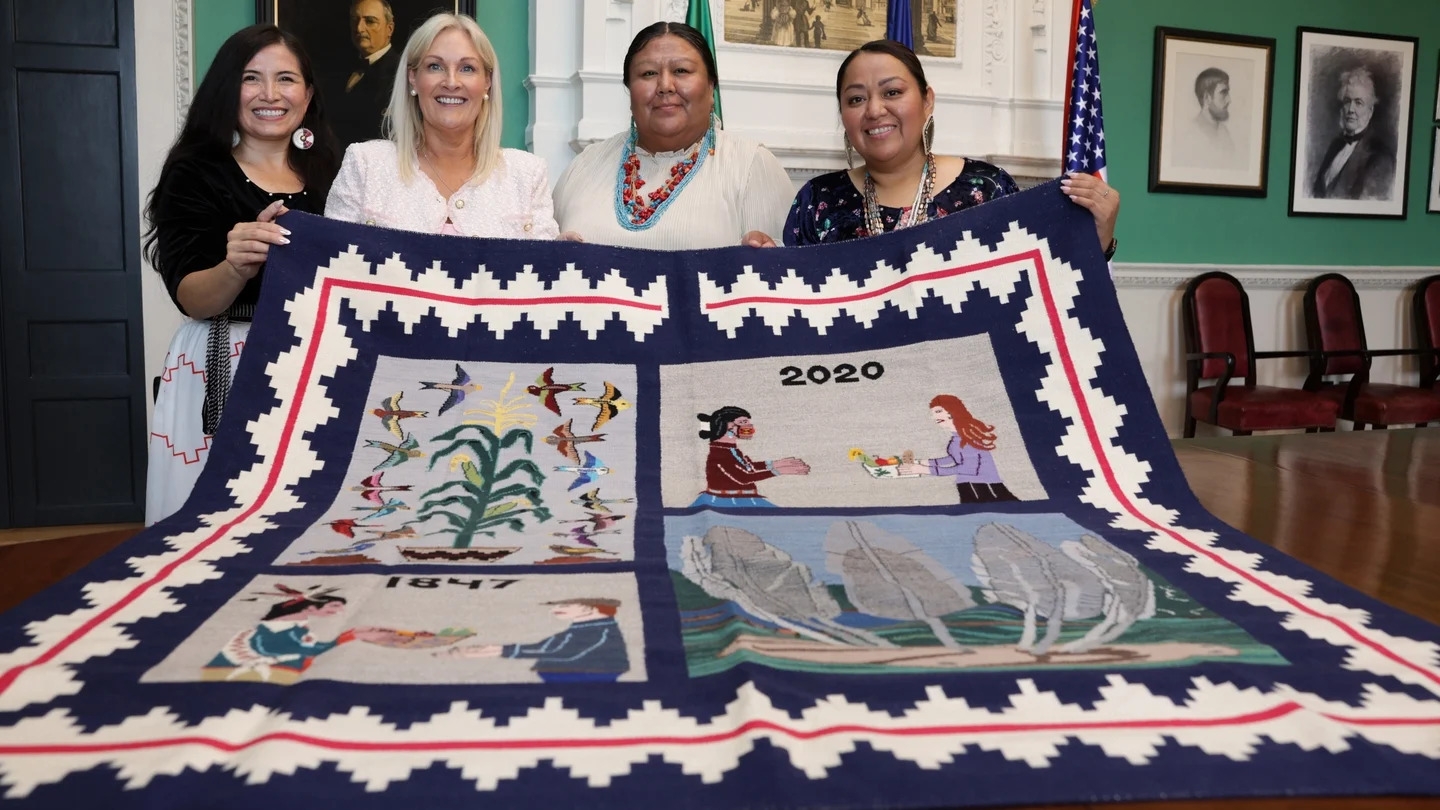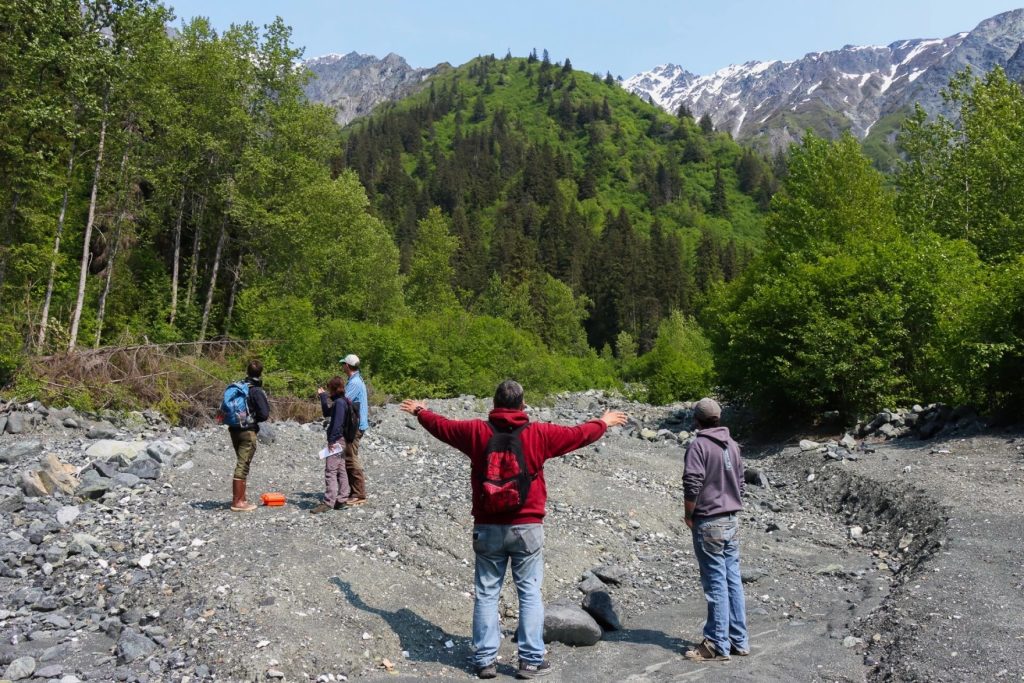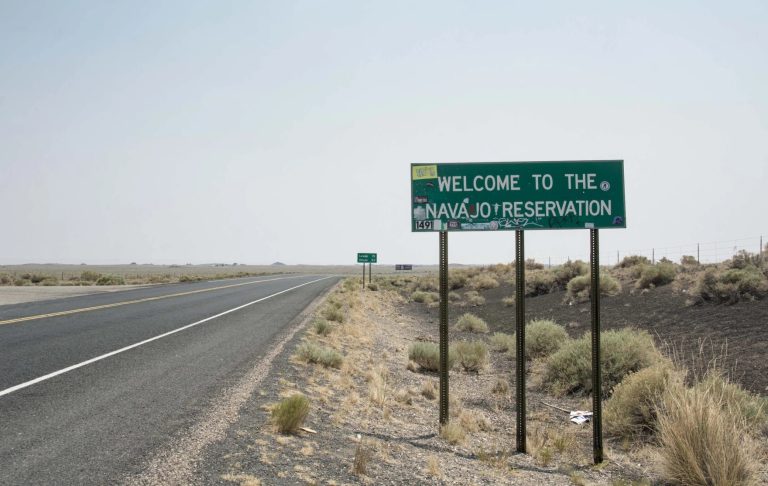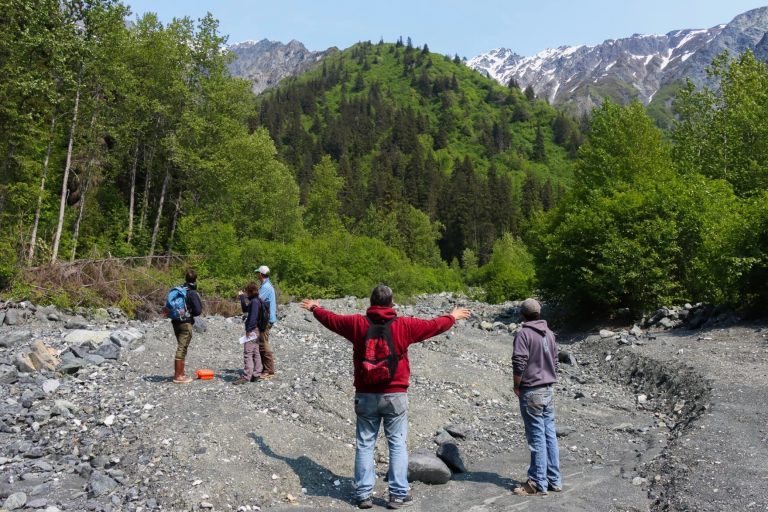Podcast: Play in new window | Download | Embed
Photo: Chilkat Indian Village environmental staff and outside researchers stand on the 23-mile slide area during a site visit in June. (Avery Ellfeldt / KHNS)
The Native village of Klukwan, just north of Haines, Alaska is grappling with landslide risk that’s intensifying with climate change. It’s also posing a major obstacle to the community’s growth.
The village is in the thick of a research project to better understand the threat – and as Avery Ellfeldt reports for the Alaska Desk, residents hope the information will guide housing development in the years to come.
Decades ago in the Chilkat Valley, heavy rains would send mudflows tumbling down the Takshanuk Mountains, over the international highway, and into Klukwan.
Dan Hotch remembers it well. He says the slides in the 1970s, 1980s and 1990s would damage buildings – and send rocks and mud under the deck of his family’s home.
“Growing up as a kid, we hated August and September weather because we knew the rains were coming and we knew the water was coming down.”
About 25 years ago, a community member built a berm to direct the debris away from the village.
It worked, says Hotch, who is now an environmental specialist with the Chilkat Indian Village, but that’s starting to shift as the slide path evolves – and in some instances points the sediment back toward Klukwan.
That has major implications for the community’s long-term future.
The tribe wants to expand the village, which is currently home to roughly 90 residents, but the major question is where new housing should go amid intensifying landslide risk.
The conundrum isn’t isolated to Klukwan.
Communities around the world are scrambling to figure out how to protect homes – and build new ones – as natural disasters intensify with climate change.
In the Chilkat Valley, work is already underway to better understand – and reduce – those risks.
Josh Roering is a University of Oregon-based geomorphologist involved in the project.
Walking through a dense patch of forest on a recent field visit to Klukwan, he points to little black boxes strapped high on trees.
“These are called infrasound sensors … they’re recording things that we are not hearing, but are happening in the environment.”
The tribe will ideally be able to use the information to plan new berms – and support grant applications and safe community development.
Hotch says that could encourage tribal members to move home. That idea is personal. He moved back to Klukwan about a decade ago, after spending a number of years in Oregon for boarding school, and later for work
“It’s great to be home. We need more people back at home.”
The ongoing research is an early step in that direction.

Ethel Branch, left, presents the Florence Riggs rug to Ceann Comhairle Verona Murphy, the speaker of the lower house of Irish parliament, Dáil Éireann. (Courtesy Dáil Eireann)
Native leaders visited Ireland this summer, including a delegation which presented a Navajo rug to Ireland’s parliament.
Seo McPolin explains.
Former Navajo Nation Attorney General Ethel Branch led a delegation from the Navajo and Hopi Families COVID-19 Relief Fund.
They presented Irish parliament with a rug by weaver Florence Riggs on behalf of the Navajo and Hopi Nations.
It was a thank you gift for the estimated $3 million in donations from Ireland to the two nations during the pandemic – including $100,000 from U2 drummer Larry Mullen.
The rug depicts the Kindred Spirits Sculpture in the Irish county of Cork, which honors Choctaw Nation donations to Irish famine victims in the 1840s.
That gift inspired the World Peace Gathering last month featuring Branch and Hereditary Chief Phil Lane Jr. of the Yankton Dakota and Chickasaw Tribes.
During the event, he honored the Irish people.
“They have suffered as we’ve suffered. and they are still the most giving people per capita in the entire world. Let’s give a hand to the Irish for that (applause).”
Get National Native News delivered to your inbox daily. Sign up for our daily newsletter today.




Leave a Reply